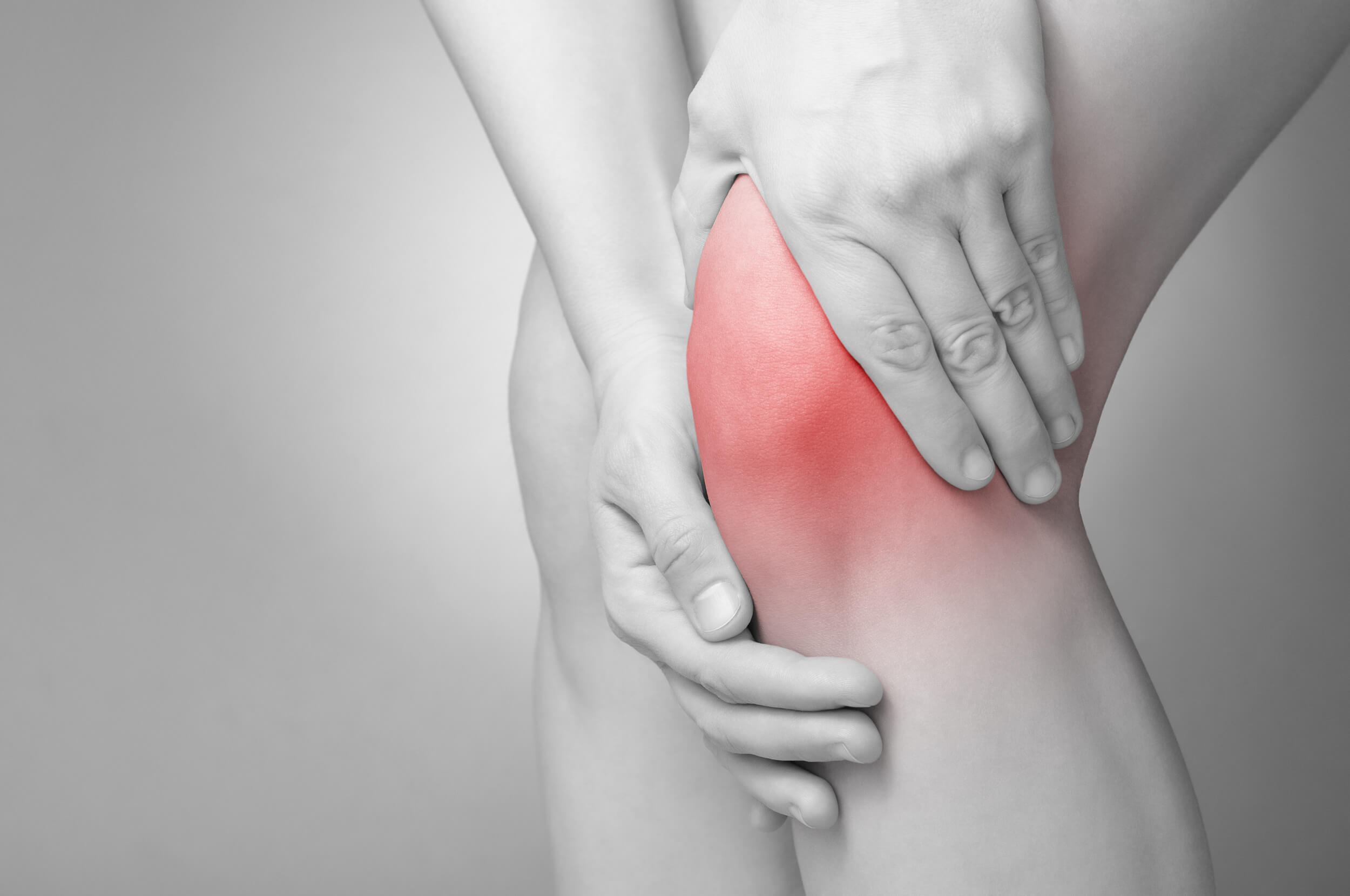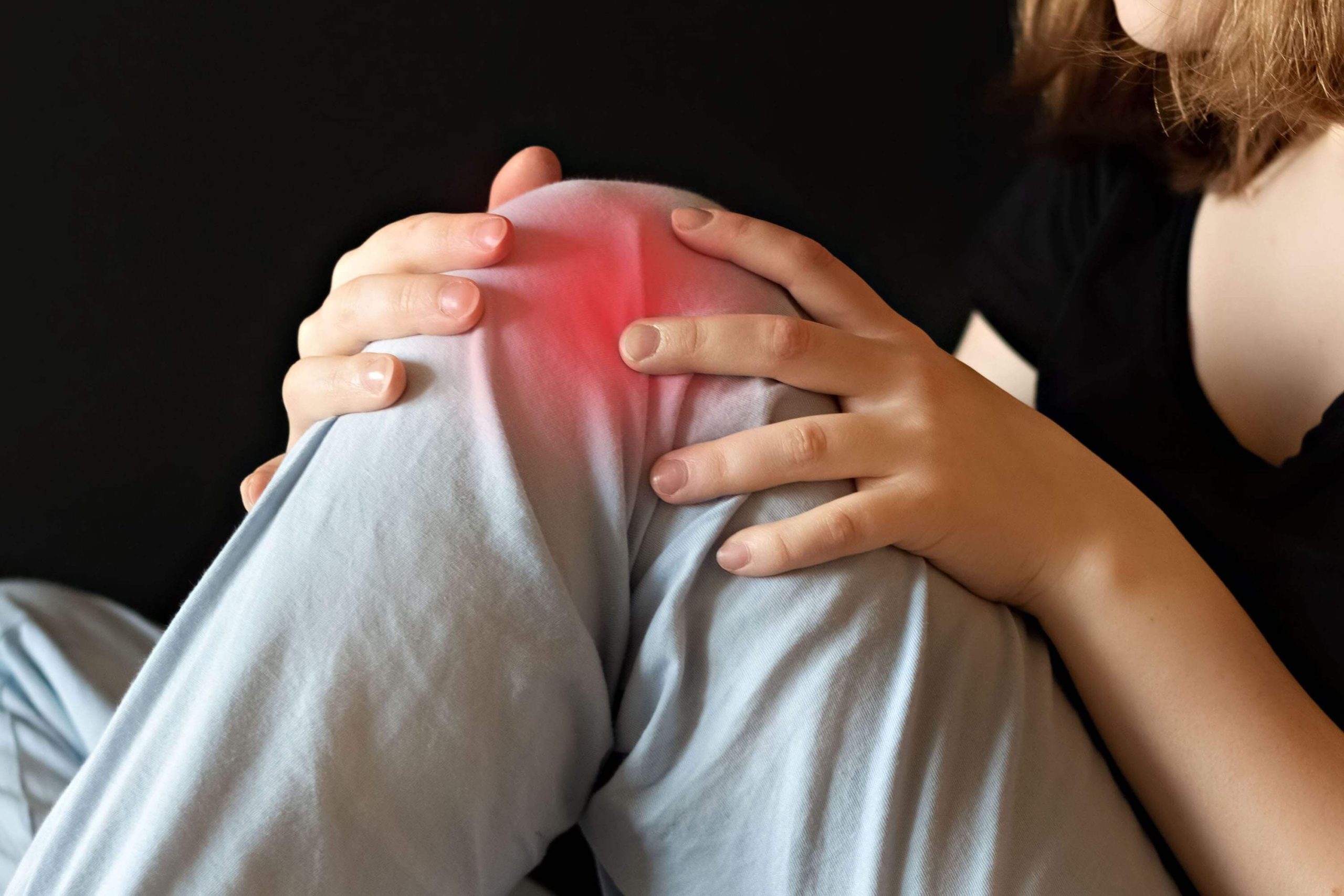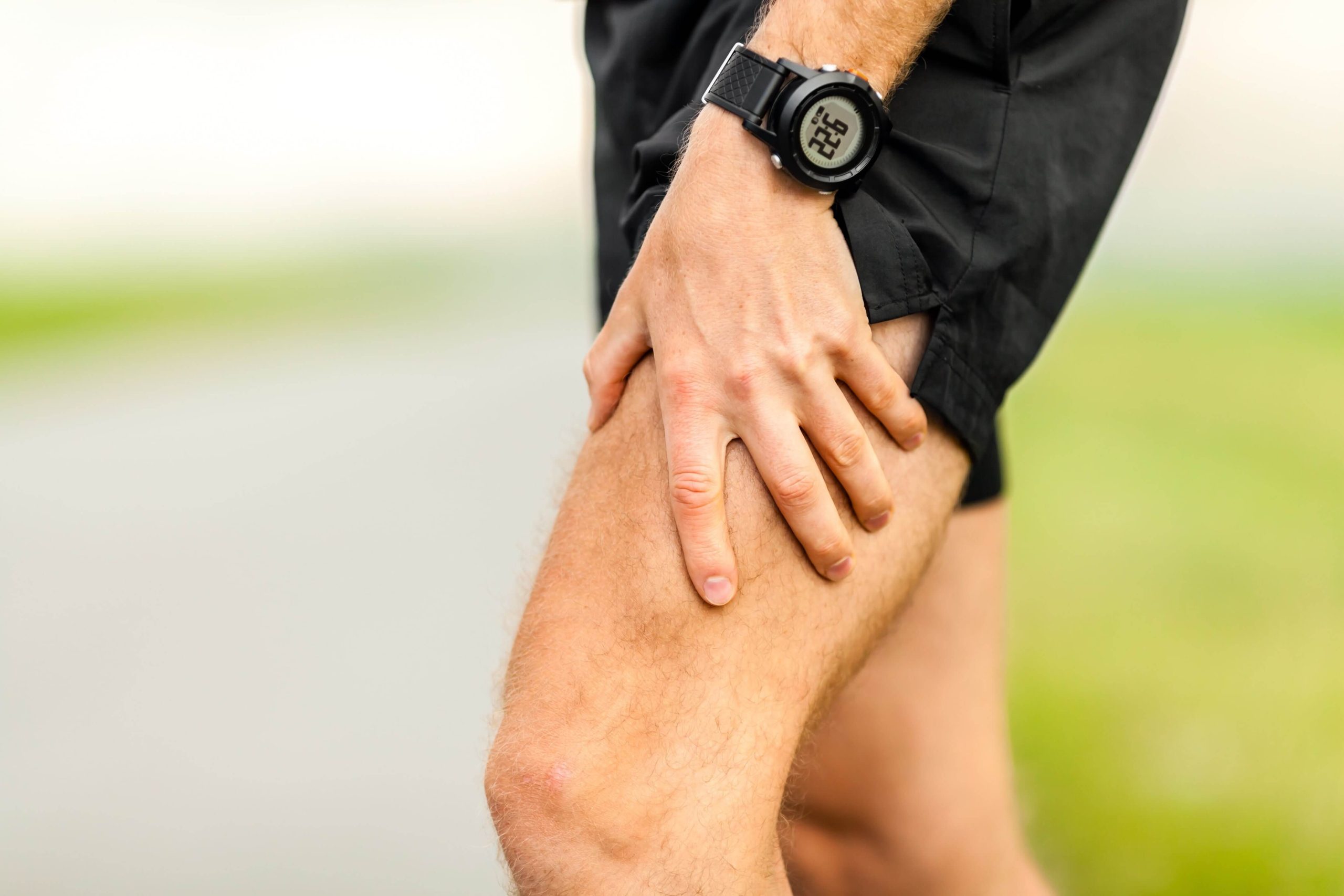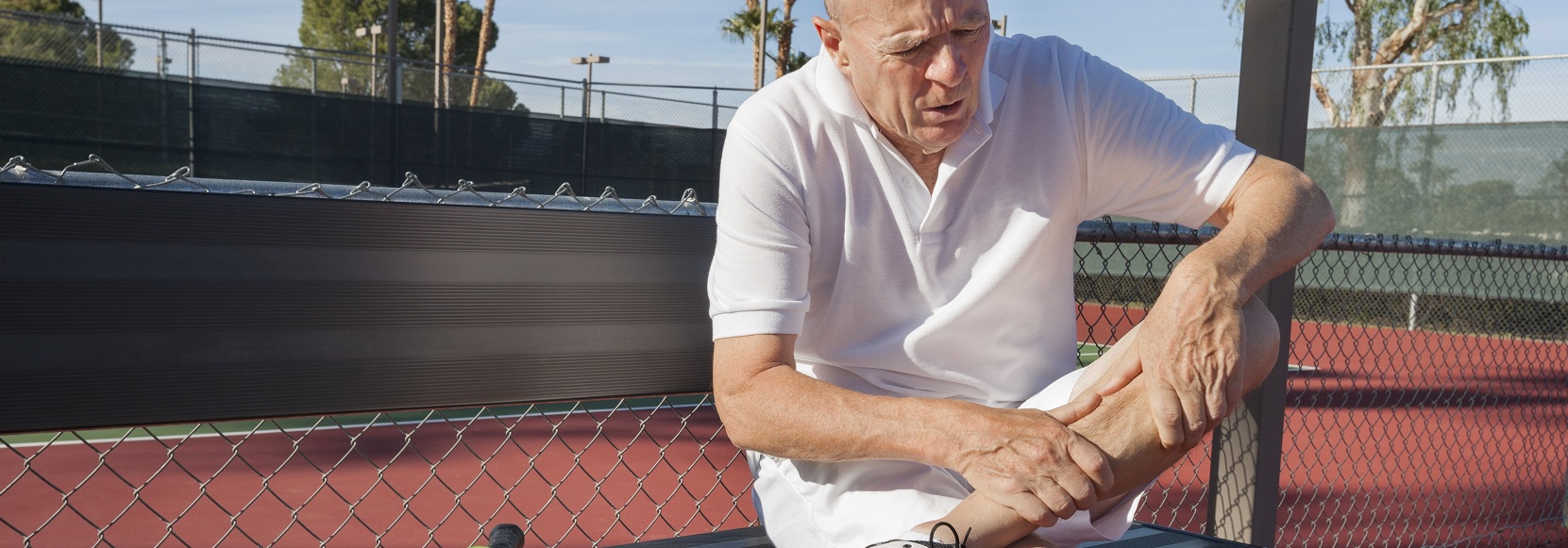Common knee problems can include:
- Pain, soreness, or tenderness.
- Swelling or bruising around the knee.
- Instability of the knee; where the knee can give way or won’t support your weight.
- Stiffness, limited movement, or lockingof the knee.
- Clicking, popping, or grinding sounds with movement.
Injuries are the one of the most common cause of knee problems. However, it may be difficult recall a specific injury, especially if your symptoms began gradually or during everyday activities, like:
- Overuse injuries (such as bursitis, tendonitis, or patellofemoral pain syndrome) often happen with repetitive activities or repeated or prolonged pressure on the knee. These can include activities such as stair climbing, bicycle riding, jogging, or jumping which stress joints eventually leading to irritation and inflammation.
- Sudden (acute) injuries may occur from a direct blow to the knee or from excessive bending or twisting of the knee. Acute injuries include:
- Sprain/Strain.
- Torn ligaments. The medial collateral ligament (MCL) is the most commonly injured ligament.
- Torn meniscus
- Fractures/Dislocated knee
The pain, bruising, or swelling from an acute injury may be severe and develop within a few minutes of the injury. Nerves or blood vessels can be pinched or damaged during the injury. The knee or lower leg may in turn feel numb, weak, or cold leading to tingling; or may look pale or blue.

Other causes of pain:
- Osteoarthritis (degenerative joint disease) may cause knee pain that is increased in the early part of the day and improves during the latter part of the day. It often develops at the site of a previous injury or problem.
- Osgood-Schlatter disease common in boys ages 11 to 15 causes pain, swelling, and tenderness in the front of the knee below the kneecap.
- A popliteal (or Baker’s) cyst is a common cause swelling in the back of the knee.
- Infection in the skin (cellulitis), joint (infectious arthritis), bone (osteomyelitis), or bursa (septic bursitis) can lead to pain and restricted knee movement. One sigh of this is that the skin over the knee may be red, swollen or hot, pus may be present, or you may have a fever or chills.
- A problem elsewhere in the body, such as a pinched nerve in the low back or a problem in the hip, can occasionally cause knee pain.
In Advanced Physical Medicine treatment for knee injuries may include a knee braces, crutches, physical therapy, exercises, knee joint manipulation, advanced regenerative treatments like cell therapy or platelet rich plasma and anti-inflammatory injections. Treatment options will depend on the age and health condition of the patient, the severity of pains and symptoms, and the type of injury (if an injury occurred). Call us TODAY to schedule a FREE consultation!

Foot or Ankle
Most people have had a minor problem with a toe, foot, or ankle. Many problems can occur from everyday wear and tear, or overuse. Ankle, foot or toe problems can also occur from injuries or the natural process of aging.
One of the most common problems are muscle cramps of a “charley horse” where your toes, feet, or ankles may burn, sting, hurt, feel tired, sore, stiff, numb, tingly, hot, or cold. Another common problem is swelling the feet or ankles. You may have noticed an embarrassing odor from your feet. Some of these problems are normal as a person ages or during pregnancy. Home treatment is usually all that is needed to help relieve the symptoms of these simple problems.
Toe, foot, or ankle problems may be caused by an injury. If you think an injury caused your problem, see the topic Toe, Foot, or Ankle Injuries.
Most people have had a minor toe, foot, or ankle injury that caused pain or swelling at one time or another.
Toe, foot, or ankle injuries most commonly occur during:
- Sports activities.
- Work-related activities.
- Activities around the home.

Sudden (acute) injury:
An acute injury may occur from a fall or from twisting or bending a limb excessively. Pain may be swift and even severe. Bruising and swelling may develop quickly after the injury.
Acute injuries include:
- Bruises. After an ankle injury, bruising may extend to the toes from the effects of gravity.
- Injuries to ligaments or tendons, such as ruptured tendons in the heel (Achilles tendon). Young boys, between 8 and 14 years old, may have a condition known as Sever’s disease, which causes injury to the growing bone where the Achilles tendon is attached. This usually occurs during activity and is relieved with home treatment.
- Injuries to joints (sprains). If a sprain does not appear to be healing, a condition known as osteochondritis dissecans may be present, causing persistent symptoms.
- Pulled muscles (strains). Muscles of the foot and ankle can be strained and can also rupture.
- Dislocations/fractures
- Crushing injury, which can lead to compartment syndrome. Children are more at risk for compartment syndrome with a crushing foot injury.
Foot Overuse injuries:
Overuse injuries occur when too much stress is placed on a joint or other tissue, often by “overdoing” an activity or repeating the same activity over and over, include:
- Retrocalcaneal bursitis.
- Achilles tendinitis or tendinosis.
- Stress fractures.
- Plantar fasciitis.
- Metatarsalgia.
Foot Joint problems:
Toe joints are more likely to develop problems than other joints in your feet.
- Heat, pain, redness, swelling, and extreme tenderness that comes on quickly in your big toe joint may be caused by gout. Similar symptoms can occur with an infection.
- If you have swelling or a bump at the base of your big toe, you may have a bunion.
- If you have a bump on the outside of your little toe, you may have a bunionette.
- If your toes, other than your big toes, bend in an odd position, you may have hammer toes, mallet toes, or claw toes.
- Joint pain, stiffness, and swelling are common when you have bursitis, arthritis, lupus, or gout.
Foot Pain:
You may develop pain in the front (ball) of your foot (metatarsalgia) or in your heel. Heel problems commonly occur when you overuse calf muscles, wear shoes with high heels, or participate in activities, such as running, that cause repeated pounding of your heels.
- Sharp pain on the bottom of your heel may be caused by plantar fasciitis.
- Pain in the back of your heel and ankle may be caused by Achilles tendinitis or tendinosis or retrocalcaneal bursitis.
- Pain that is worse before or after exercise but improves during exercise may be caused by a stress fracture of a bone in your foot (usually a metatarsal bone).
- Small bony growths under your heel bone may be a heel spur.
- Pain in the midfoot may be caused by fallen arches or being flat-footed.
Many conditions may affect the nerves of the foot which can result in numbness, tingling, and burning.
- Pain, burning, tingling, or numbness that occurs between your toes, especially the third and fourth toes, and in the ball of your foot may be caused by a growth around the nerves (Morton’s neuroma).
- Pain, numbness, and tingling that begins in your back or buttocks, moves down your leg and into your foot may be sciatica, caused by a pinched nerve (nerve root compression).
- Foot and ankle pain that occurs with numbness and weakness in your foot may be caused by a pinched nerve in your ankle (tarsal tunnel syndrome) or back (sciatica).
- Burning, numbness, or lack of feeling in the feet may be caused by poor circulation, especially in people who have diabetes or peripheral vascular disease. The circulation problem can lead to nerve damage (peripheral neuropathies). Foot problems are more likely to develop in people who have these conditions.
In Advanced Physical Medicine we offer effective Treatments for a foot/ankle condition that may include physical therapy, chiropractic care, regenerative treatments like cell therapy and platelet rich plasma, and more. Treatment depends on:
- The type, location, and severity of the problem.
- The age, health status, and activities requirements of the patient.
Call us TODAY to schedule a FREE consultation!

